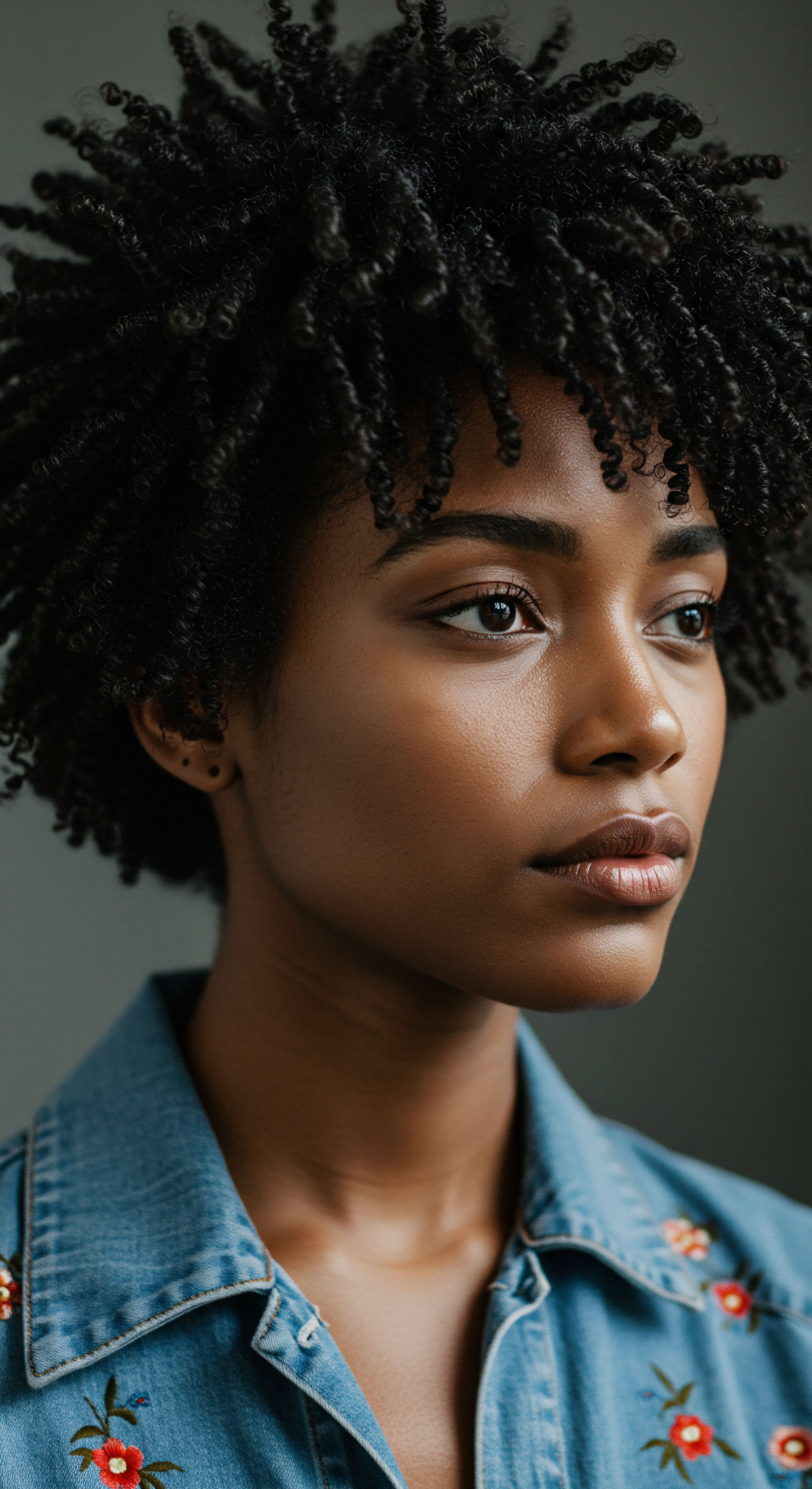
Roots
A quiet observation often surfaces when considering the myriad expressions of beauty across time ❉ certain shifts, though seemingly confined to personal choice, ripple outward, altering collective understandings. The 1960s natural hair movement, at its heart, was such a moment for Black beauty standards. It was not merely a change in hairstyle; it was a profound re-calibration of what was deemed beautiful, acceptable, and authentically Black.
This transformation reached into the very fibers of identity, recalibrating perceptions that had long been distorted by external ideals. The movement did not just adorn heads; it began a conversation within souls, questioning deeply ingrained notions of worth and aesthetic value.
Before the cultural earthquake of the 1960s, a pervasive Eurocentric standard of beauty often dictated what was considered “good” hair within Black communities. This standard, a lingering shadow of historical oppression, often favored hair that was straight, soft, and easily manipulated, leading many to seek chemical relaxers or hot combs to alter their natural texture. These practices, while offering a semblance of societal acceptance, frequently brought physical discomfort and psychological strain, reinforcing a message that natural Black hair was somehow less desirable, less professional, or less worthy of admiration. The journey toward straightened hair was, for many, a path paved with scalp burns and a subtle yet constant reinforcement of self-rejection.
The 1960s natural hair movement was a quiet re-calibration of what was deemed beautiful, acceptable, and authentically Black, extending beyond mere aesthetics into the realm of personal identity.
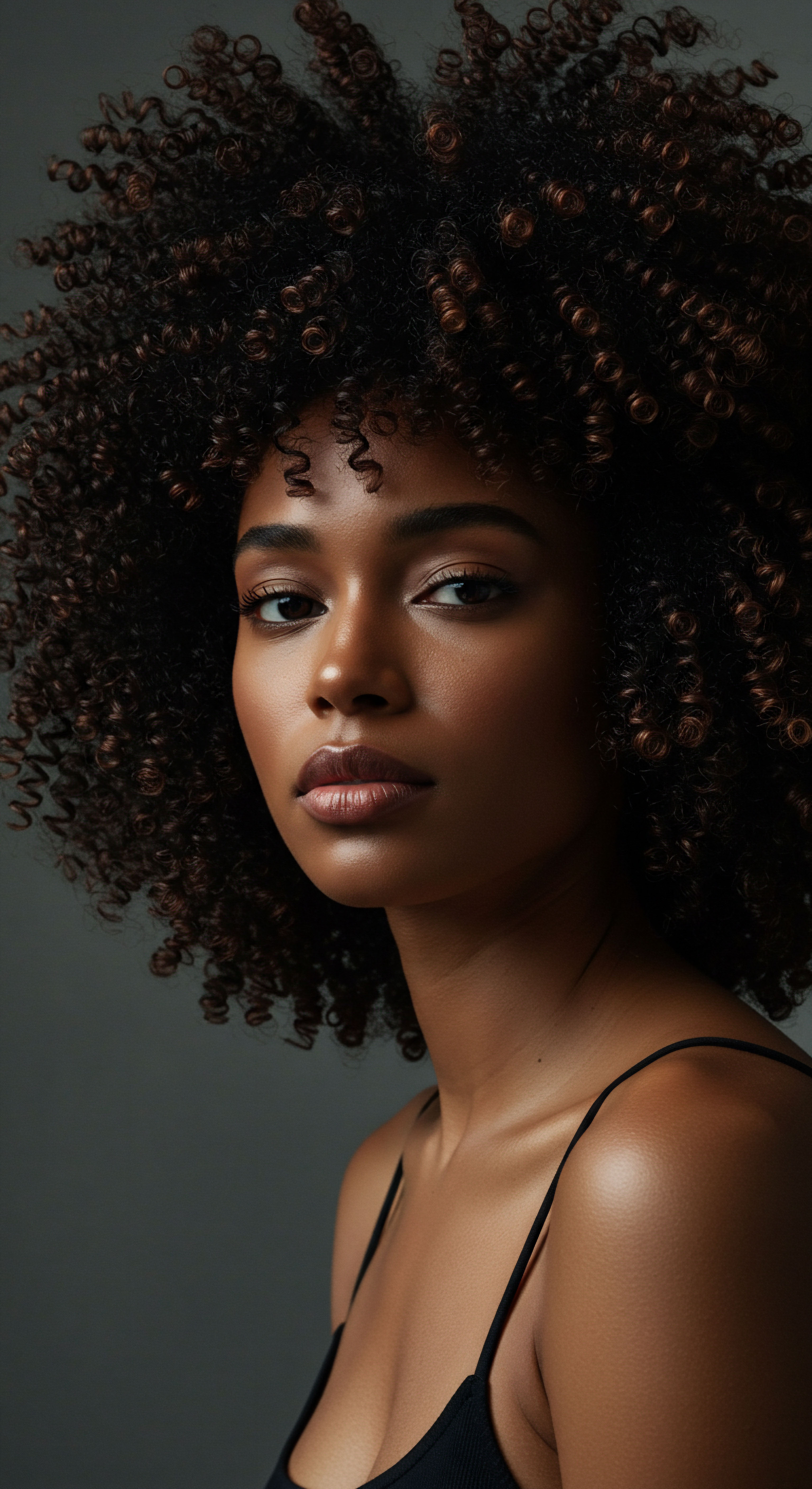
Hair Anatomy and Physiology Specific to Textured Hair
To truly appreciate the seismic shift brought by the natural hair movement, one must first comprehend the unique biological architecture of textured hair. Unlike straight hair, which typically has a round cross-section, Afro-textured hair exhibits an elliptical or flat cross-section. This distinct shape, coupled with an uneven distribution of keratin, results in a highly coiled or kinky pattern.
Each bend and curve in the strand creates points of vulnerability, making textured hair more prone to dryness and breakage. The cuticle layer, which protects the inner cortex, may also be less tightly sealed in some textured hair types, allowing moisture to escape more readily.
The follicle itself plays a role. In individuals with highly textured hair, the hair follicle is often curved, causing the hair to grow in a spiral or zig-zag fashion. This curvature affects how sebum, the scalp’s natural oil, travels down the hair shaft.
While sebum effortlessly coats straight strands, it struggles to navigate the twists and turns of coiled hair, often leaving the ends drier and more susceptible to damage. Understanding these intrinsic biological characteristics is paramount, for they underscore why specific care practices and products are not merely preferences, but rather necessities for maintaining the health and vitality of textured strands.

Why Does Coiled Hair Seek More Moisture?
The structural nuances of coiled hair, from its elliptical cross-section to its curved follicle, inherently predispose it to a greater need for hydration. The numerous bends along each strand hinder the smooth descent of natural scalp oils, leaving sections of the hair shaft, particularly the ends, vulnerable to dryness. This natural tendency for dryness makes consistent moisture application through water-based products and emollients a foundational element of textured hair care. Without adequate hydration, the hair can become brittle, leading to increased breakage and a diminished appearance.
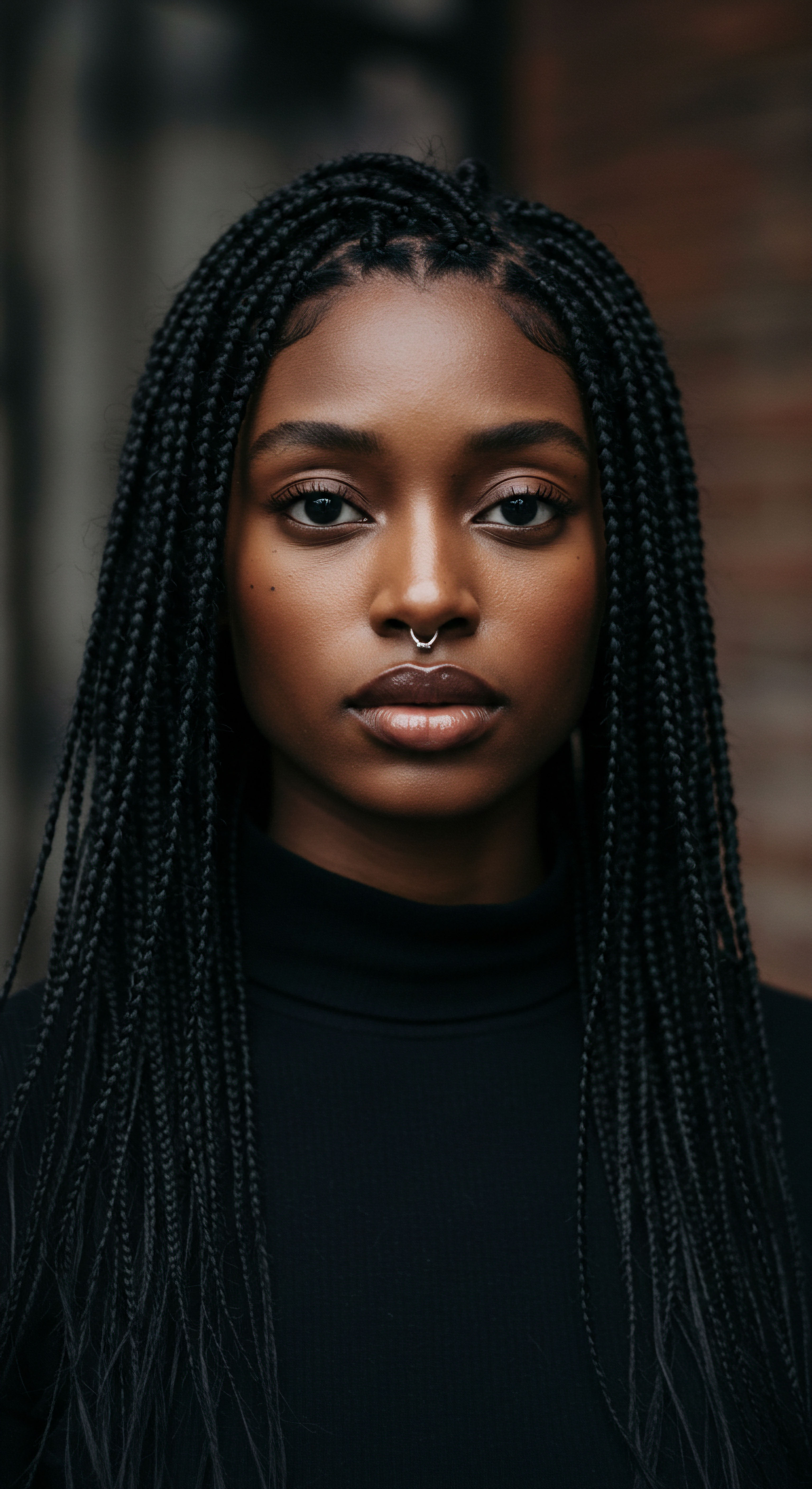
Textured Hair Classification Systems
The vast spectrum of textured hair has led to various classification systems, attempting to categorize the diverse curl patterns and densities present within Black and mixed-race communities. While no single system perfectly captures the infinite variations, these frameworks offer a common language for understanding and discussing different hair types. The most widely recognized system categorizes hair into types 1 through 4, with sub-classifications (A, B, C) indicating increasing tightness of curl or coil.
- Type 1 Hair ❉ Generally straight, though some natural waves may be present.
- Type 2 Hair ❉ Wavy hair, ranging from loose waves (2A) to more defined S-shaped waves (2B) and some distinct waves (2C).
- Type 3 Hair ❉ Curly hair, with defined curls that can range from loose, bouncy spirals (3A) to tighter, more voluminous curls (3B) and corkscrew curls (3C).
- Type 4 Hair ❉ Coily or kinky hair, characterized by tight, often zig-zag patterns. Type 4A features tight S-shaped coils, Type 4B has a more Z-shaped pattern with sharp angles, and Type 4C possesses the tightest, most densely packed coils, often with little to no defined curl pattern without manipulation.
This classification, while a useful guide, should not be viewed as rigid. Many individuals possess multiple curl patterns on their heads, a phenomenon often termed “multi-textured.” The recognition of this diversity, and the celebration of each distinct pattern, stands as a quiet victory born from the natural hair movement’s initial push for self-acceptance.

The Essential Lexicon of Textured Hair
The natural hair movement did more than just popularize certain styles; it catalyzed the creation and widespread adoption of a specialized vocabulary. This lexicon serves as a communal understanding, allowing individuals to articulate their hair experiences with precision and shared recognition. Terms like “co-wash,” referring to washing hair with conditioner only to preserve moisture, became commonplace.
“Protective styles,” encompassing braids, twists, and locs, gained prominence as methods to safeguard delicate strands from environmental damage and manipulation. The concept of “shrinkage,” the apparent reduction in hair length due to its coiled nature, transformed from a source of frustration into a celebrated characteristic, a visual testament to the hair’s natural elasticity.
This shared language fostered a sense of community and provided tools for education. Online forums and early social media platforms became virtual classrooms where individuals could exchange knowledge, product recommendations, and styling tips, all communicated through this newly solidified vocabulary. The language itself became an act of self-definition, moving away from terms that pathologized natural Black hair and towards a lexicon that honored its unique properties and care requirements.
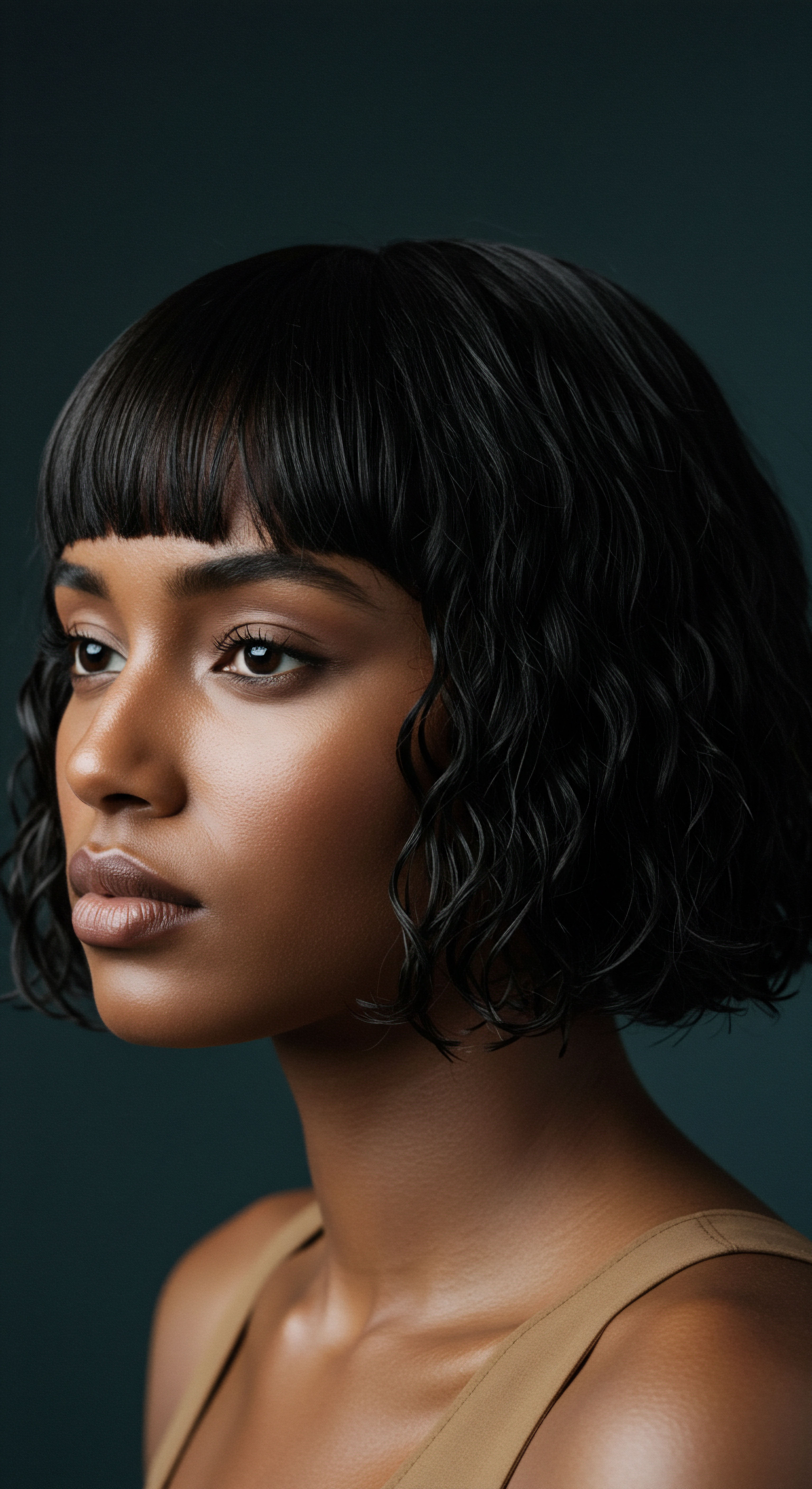
Hair Growth Cycles and Influencing Factors
Understanding the hair growth cycle offers another lens through which to appreciate textured hair care. Hair follicles cycle through three primary phases ❉ anagen (growth), catagen (transitional), and telogen (resting/shedding). The length of the anagen phase largely determines the maximum length a hair strand can attain. While the biological cycle is universal, factors such as genetics, nutrition, overall health, and hair care practices significantly influence its efficiency, particularly for textured hair.
For individuals with highly coiled hair, mechanical manipulation, excessive heat, and harsh chemical treatments can prematurely disrupt the anagen phase, leading to breakage that hinders apparent length retention. The movement of the 1960s, by advocating for a reduction in chemical processing and a greater acceptance of natural styles, indirectly supported healthier growth cycles. It steered individuals away from practices that compromised the hair’s integrity, thus allowing for greater length and density to be realized. This shift was not merely aesthetic; it was a move toward biological alignment, allowing the hair to flourish in its inherent state.
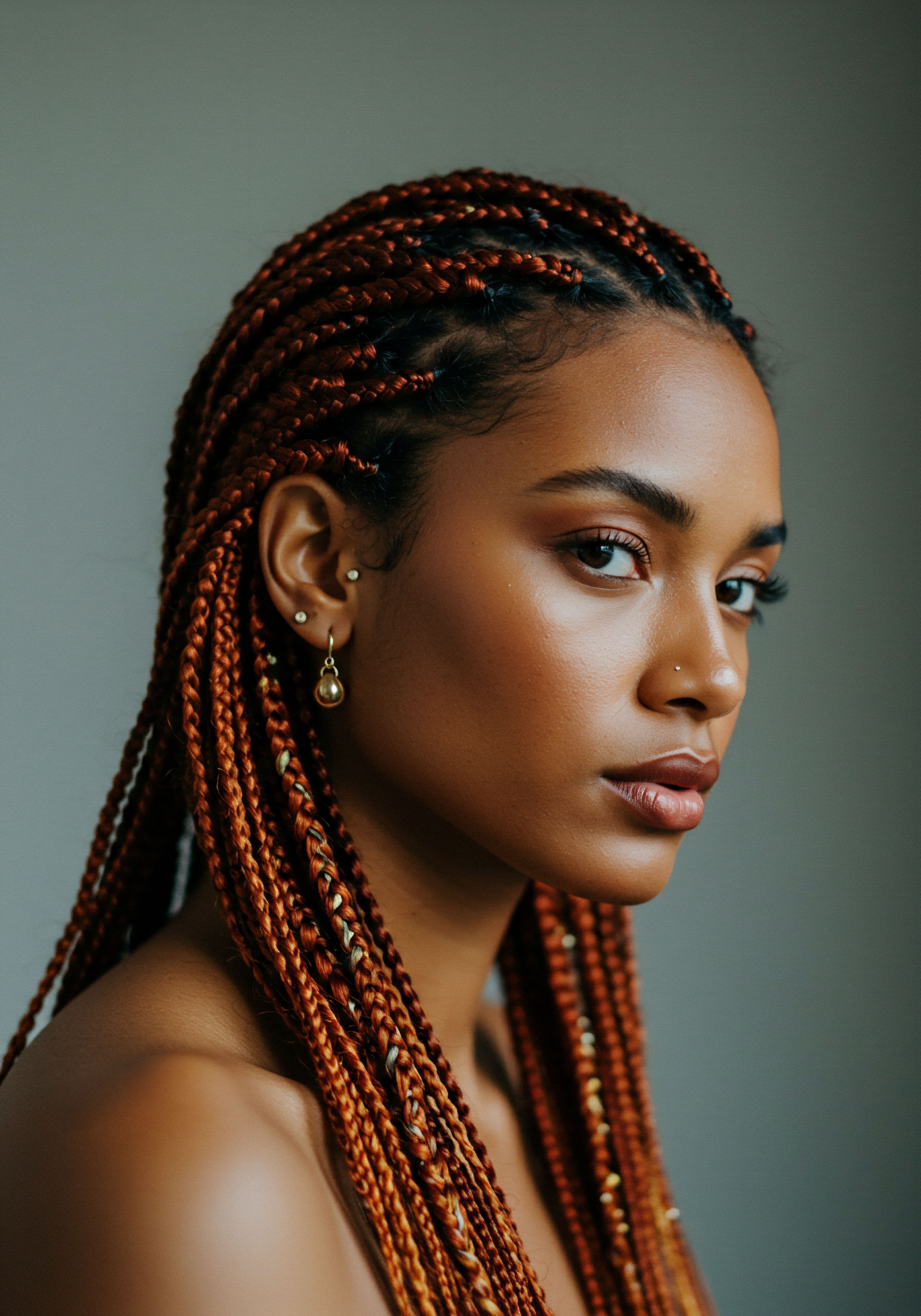
Ritual
Stepping from the foundational understanding of textured hair’s intrinsic nature, we turn our attention to the practical wisdom that blossomed in the wake of the 1960s natural hair movement. This section explores the daily and periodic practices that shape the experience of Black hair, offering guidance and insight into techniques and methods with gentle care. It is a space where shared knowledge unfolds, illuminating how historical shifts translated into tangible routines, transforming care from a burdensome chore into a celebratory ritual. The movement’s influence extended beyond mere acceptance; it cultivated a renewed appreciation for the intentional acts of nurturing, styling, and protecting textured strands, practices that became deeply personal expressions of identity and self-regard.
The shift away from chemical straightening, once a widespread norm, necessitated a rediscovery of methods for managing and adorning natural coils. This rediscovery was not a simple return to past practices; it was a dynamic process of innovation, adapting ancient techniques with modern understanding and products. The resulting landscape of styling possibilities for Black and mixed-race hair is expansive, ranging from simple definitions to intricate sculptural forms, each requiring specific tools and a patient hand.
The natural hair movement cultivated a renewed appreciation for intentional acts of nurturing, styling, and protecting textured strands, transforming care into a celebratory ritual.

Protective Styling Encyclopedia
Protective styles, a cornerstone of textured hair care, gained significant cultural prominence as the natural hair movement matured. These styles, designed to minimize manipulation and exposure to environmental elements, shield the delicate ends of the hair, which are often the oldest and most fragile parts of the strand. The practice of protective styling reduces breakage, aids in length retention, and offers versatility in appearance.
The spectrum of protective styles is vast and diverse, reflecting the rich heritage of African hair traditions. Each style offers unique benefits and requires specific preparation and maintenance.
- Braids ❉ From cornrows that lie flat against the scalp to individual box braids or Senegalese twists, braiding is a timeless protective method. They keep hair neatly tucked away, reducing tangling and friction. Proper tension is crucial to avoid stress on the scalp and hair follicles.
- Twists ❉ Two-strand twists, flat twists, and Havana twists offer a softer alternative to braids, often providing more definition and less tension. They are particularly favored for their ability to stretch the hair and create a beautiful wave pattern upon unraveling.
- Locs ❉ A commitment to a long-term protective style, locs involve the deliberate matting and coiling of hair strands. They represent a deep connection to cultural heritage and require specialized care for cleansing and re-tightening.
- Buns and Updos ❉ Simple yet effective, these styles involve gathering hair and securing it away from the shoulders and neck, minimizing friction with clothing and external elements.
The resurgence of these styles, often seen as overtly political symbols during the 1960s, transformed into everyday expressions of personal style and hair health. This normalization allowed for a broader acceptance of diverse aesthetics, extending beyond the political statement to become a widely adopted practice for hair preservation and beauty.
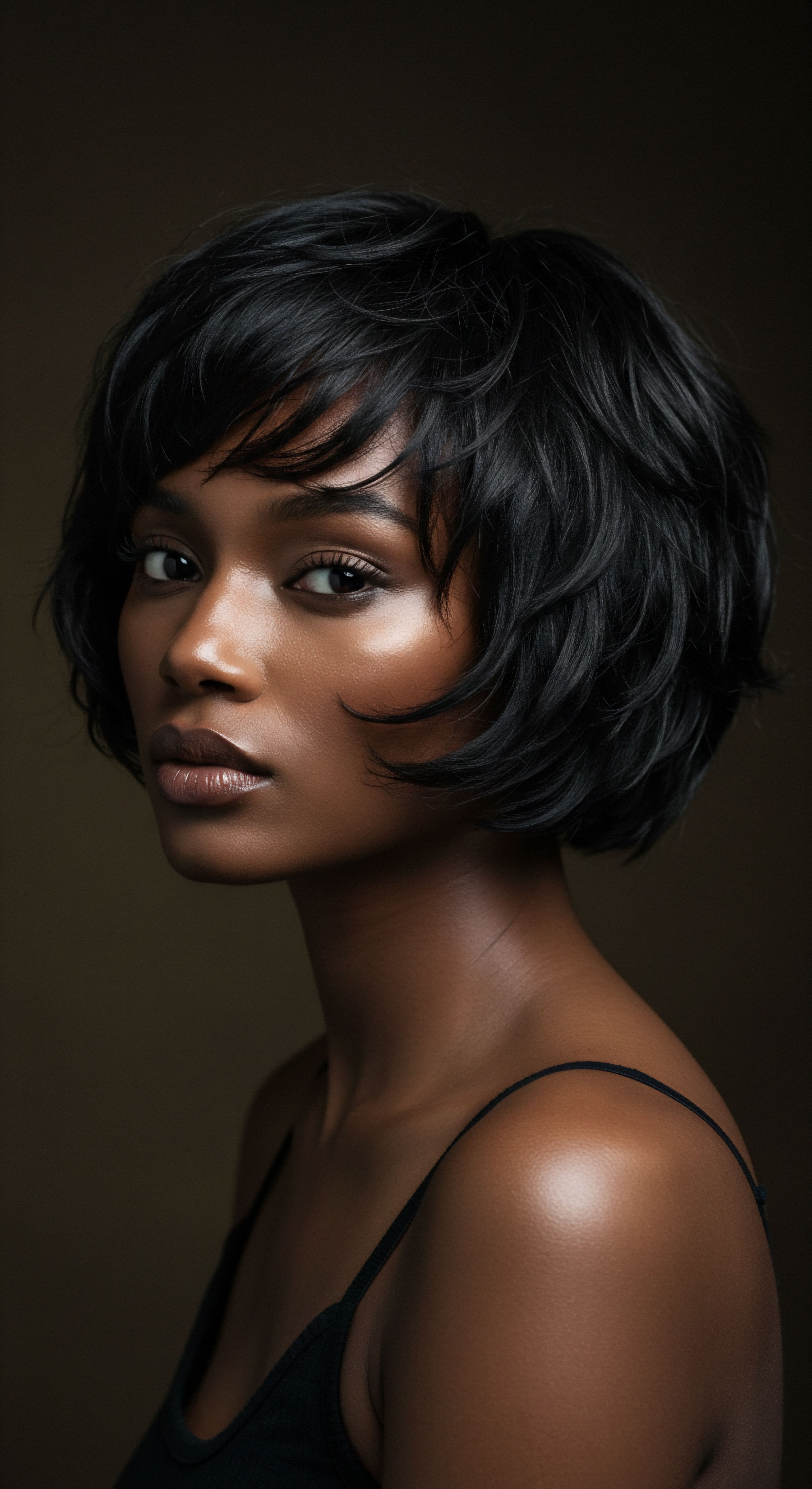
Natural Styling and Definition Techniques
Beyond protective measures, the movement spurred a re-exploration of techniques to enhance and define natural curl patterns. This realm of styling focuses on bringing out the inherent beauty of coils and kinks without altering their structure. The pursuit of definition often involves specific product application methods and drying techniques.
- Wash and Go ❉ This technique involves cleansing and conditioning the hair, then applying styling products to wet strands to encourage curl clumping and definition, allowing the hair to air dry or diffuse. It celebrates the hair in its most authentic state.
- Twist-Outs and Braid-Outs ❉ Hair is sectioned, twisted or braided while damp, and allowed to dry completely before unraveling. This method creates elongated, defined waves or curls, offering a temporary stretched look.
- Bantu Knots ❉ Small sections of hair are twisted and coiled tightly against the scalp, forming a knot. Once dry and unraveled, they produce a distinct, spiraled curl pattern.
These techniques represent a deliberate departure from the previous era’s reliance on chemical alteration. They require patience and a growing understanding of one’s own hair texture, fostering a deeper, more intimate relationship with one’s natural self. The joy found in seeing one’s coils beautifully defined became a personal affirmation, echoing the broader message of self-acceptance.
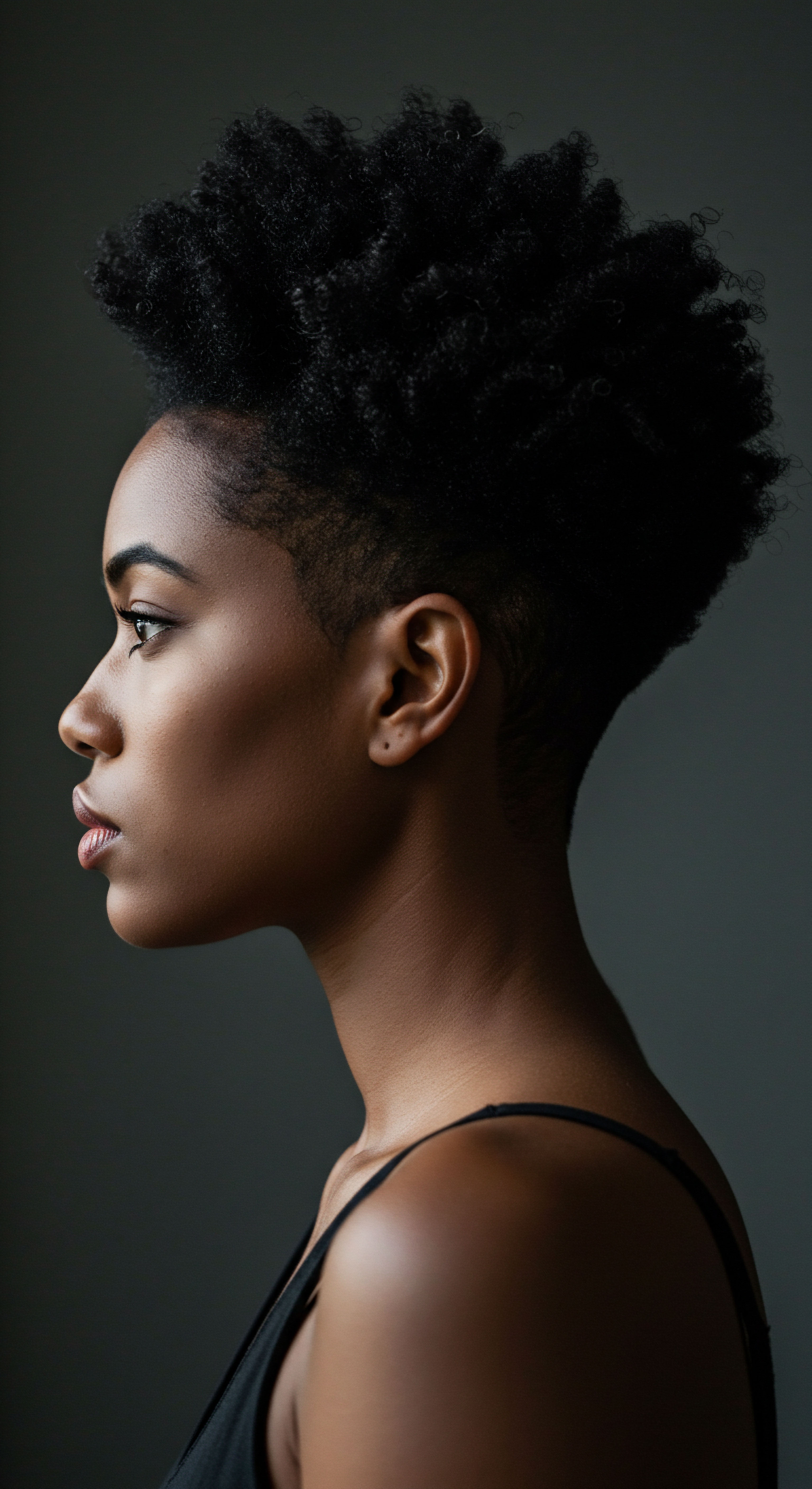
Wigs and Hair Extensions Mastery
While the natural hair movement championed authentic textures, it also redefined the role of wigs and hair extensions within Black beauty culture. Far from being tools of concealment or assimilation, these accessories evolved into versatile instruments for creative expression, protective styling, and convenience. The 1960s laid the groundwork for a broader acceptance of diverse appearances, allowing for a future where wigs and extensions could be seen as fashion choices rather than obligations.
Modern advancements in wig construction and extension types offer unprecedented realism and variety. Lace front wigs, full lace wigs, and various forms of sew-in, tape-in, and clip-in extensions provide options that blend seamlessly with natural hair or offer a complete transformation. The ability to switch between styles without altering one’s natural hair has become a powerful form of self-expression, allowing for experimentation with length, color, and texture while safeguarding underlying strands. This freedom, in part, stems from the groundwork laid by the movement ❉ once natural hair was acknowledged as beautiful, the choice to wear an alternative style became less about hiding and more about personal preference.

Heat Styling and Thermal Reconditioning with a Safety-First Approach
The legacy of heat styling, particularly the use of hot combs and flat irons, has a complex history within Black hair culture, often associated with the pursuit of straightened textures. The natural hair movement did not eliminate heat styling, but it certainly shifted the approach toward it. The emphasis moved from constant, high-heat applications to a more judicious, safety-first methodology.
Today, thermal reconditioning, or occasional heat styling, is approached with a greater understanding of its potential for damage. The focus is on minimizing harm through:
- Heat Protectants ❉ Products designed to shield hair from high temperatures.
- Lower Temperatures ❉ Using the lowest effective heat setting on styling tools.
- Infrequent Use ❉ Reserving heat styling for special occasions rather than daily or weekly practice.
- Deep Conditioning ❉ Prioritizing intense moisture treatments before and after heat application to restore hydration.
This conscious approach reflects a deeper respect for the hair’s natural state and a desire to maintain its health, even when temporarily altering its texture. The movement encouraged a discernment in styling choices, prioritizing hair integrity over fleeting trends, a practice that continues to define mindful textured hair care.

The Complete Textured Hair Toolkit
The rise of the natural hair movement spurred a demand for specialized tools designed to cater to the unique needs of textured hair. This led to innovations and wider availability of implements that gently detangle, define, and style coils without causing breakage.
| Tool Category Wide-Tooth Combs |
| Purpose Detangling, distributing product |
| Considerations for Textured Hair Minimizes breakage on wet hair; gentle on delicate coils. |
| Tool Category Denman Brushes |
| Purpose Curl definition, detangling |
| Considerations for Textured Hair Helps clump curls and smooth strands for definition; select models with removable rows for thicker hair. |
| Tool Category Microfiber Towels |
| Purpose Drying hair |
| Considerations for Textured Hair Reduces frizz and minimizes friction compared to terry cloth towels. |
| Tool Category Satin/Silk Scarves & Bonnets |
| Purpose Nighttime protection |
| Considerations for Textured Hair Preserves moisture, reduces friction, prevents tangling and frizz during sleep. |
| Tool Category Spray Bottles |
| Purpose Moisture application |
| Considerations for Textured Hair Allows for even distribution of water or diluted conditioning mixtures for refreshing curls. |
| Tool Category Selecting the right tools is as significant as choosing the right products for healthy textured hair. |
The widespread availability and acceptance of these specialized tools underscore the long-term influence of the natural hair movement. They signify a shift in the beauty industry, acknowledging and catering to the distinct requirements of textured hair, a market once largely overlooked or underserved. This development allows individuals to engage in their hair care rituals with greater efficacy and less frustration.

Relay
As we consider the reverberations of the 1960s natural hair movement, a deeper sub-question arises ❉ how did this cultural awakening truly reconfigure the bedrock of Black beauty standards, not merely on the surface, but within the intricate interplay of identity, societal perception, and systemic structures? This section invites a journey into the profound insights unearthed by the movement, where scientific understanding, cultural resonance, and complex societal dynamics converge. We move beyond initial shifts to dissect the enduring, multi-dimensional impacts, drawing upon research and data to illuminate a narrative of resistance, adaptation, and ongoing transformation. This exploration bypasses surface-level discussion, delving into the biological, psychological, social, and cultural factors that continue to shape Black beauty ideals today.
The 1960s natural hair movement, often encapsulated by the visual power of the Afro, was a deliberate and overt rejection of Eurocentric beauty ideals that had long been imposed upon Black individuals. This period saw a powerful assertion of Black pride and identity, with natural hairstyles becoming symbols of liberation and a challenge to societal norms. The movement’s initial surge was a direct response to generations of pressure to conform, where straightened hair was often seen as a prerequisite for social mobility and acceptance.
The 1960s natural hair movement fundamentally reconfigured Black beauty standards by intertwining identity, societal perception, and systemic structures, moving beyond surface aesthetics to a deeper assertion of self.

Reclaiming Self-Perception and Identity
One of the most significant long-term effects of the 1960s movement was the profound re-shaping of self-perception within the Black community. By promoting the beauty of natural hair, the movement directly challenged the internalized racism that had often led individuals to view their authentic textures as “unprofessional” or “undesirable.”, This cultural shift encouraged a re-evaluation of personal beauty, fostering a sense of self-acceptance and pride that extended beyond hair to encompass broader aspects of Black identity, including skin tone and facial features. The concept of “good hair,” historically linked to straighter textures, began to face widespread critique, allowing for a more inclusive definition of beauty rooted in authentic Black features.
This re-calibration of self-perception was not instantaneous, nor was it without its complexities. Generations had grown up with a specific set of beauty norms, and the transition to embracing natural hair sometimes brought internal conflict or external disapproval, even from within Black communities. However, the enduring legacy of the 1960s movement is the groundwork it laid for a more fluid and self-defined understanding of Black beauty, allowing for individual journeys of self-discovery and affirmation.

What Are the Lingering Societal Biases Against Natural Hair?
Despite the profound cultural shifts initiated in the 1960s, societal biases against natural Black hair persist, particularly in professional and academic settings. While the movement undeniably normalized natural hair in many social spheres, the fight for its full acceptance in institutions remains an ongoing challenge. Research consistently points to a continuing disparity in how natural Black hairstyles are perceived compared to straightened or Eurocentric styles.
A significant body of evidence highlights the systemic nature of this bias. For instance, a 2020 study by researchers at Duke University’s Fuqua School of Business found that Black women with natural hairstyles, such as Afros, braids, or twists, were often perceived as less professional than Black women with straightened hair, particularly in industries with conservative appearance norms. This research, published in the journal Social Psychological and Personality Science, provided empirical evidence that societal bias against natural Black hairstyles can influence workplace perceptions and perpetuate race-based discrimination.
Further supporting this, the 2023 CROWN Workplace Research Study revealed that Black women’s hair is 2.5 times more likely to be perceived as unprofessional. This same study indicated that approximately two-thirds (66%) of Black women change their hair for a job interview, with 41% of them altering their hair from curly to straight. Such findings underscore a persistent pressure to conform to Eurocentric beauty standards to secure employment or advance professionally, despite the cultural shifts of the past decades.
| Hair Type Black Women with Natural Hair |
| Perceived Professionalism (Higher Score = More Professional) Lower Scores |
| Likelihood of Interview Recommendation Less Frequently Recommended |
| Hair Type Black Women with Straightened Hair |
| Perceived Professionalism (Higher Score = More Professional) Higher Scores |
| Likelihood of Interview Recommendation More Frequently Recommended |
| Hair Type White Women with Curly Hair |
| Perceived Professionalism (Higher Score = More Professional) Comparable Scores |
| Likelihood of Interview Recommendation Comparable Recommendations |
| Hair Type White Women with Straight Hair |
| Perceived Professionalism (Higher Score = More Professional) Comparable Scores |
| Likelihood of Interview Recommendation Comparable Recommendations |
| Hair Type Data suggests a persistent bias against natural Black hairstyles in professional contexts. |
The implications extend beyond employment. In educational settings, Black students, particularly girls, frequently face disciplinary actions or exclusions due to their natural hairstyles, with some studies reporting that 66% of Black girls in majority-white schools experience hair discrimination. These policies, often framed under “grooming” or “dress code” regulations, disproportionately target culturally significant Black hairstyles, affecting academic outcomes and a sense of belonging.

What Are the Psychological Repercussions of Hair Discrimination?
The societal biases against natural Black hair carry significant psychological repercussions, a long-term effect often overlooked in surface-level discussions of beauty standards. The constant pressure to conform, coupled with experiences of discrimination, can contribute to internalized racism, negative self-image, and chronic stress.
Research by TRIYBE, for instance, highlights several mental health consequences stemming from hair-based stigma:
- Internalized Racism and Negative Self-Image ❉ Individuals may begin to internalize the message that their natural hair is “unprofessional” or “messy,” leading to self-doubt and a diminished sense of worth.
- Anxiety and Hypervigilance ❉ The constant awareness of how one’s hair is perceived can induce anxiety, particularly in academic or professional environments where judgment might affect opportunities.
- Cultural Disconnection ❉ Pressure to alter one’s hair can lead to a feeling of disconnection from cultural heritage and identity.
These psychological burdens are compounded by microaggressions, such as unwanted touching of hair or intrusive comments, which serve as daily reminders of external scrutiny. The movement of the 1960s, while a powerful catalyst for change, initiated a struggle that continues today, as individuals navigate the tension between self-acceptance and societal pressures. The pursuit of legislative protections, such as the CROWN Act, speaks directly to the ongoing need to dismantle these discriminatory structures and safeguard the mental well-being of Black individuals.

The Commercial Landscape and Product Innovation
The natural hair movement of the 1960s, and its subsequent resurgence in the 2000s, profoundly reshaped the beauty industry. Prior to this, the market for Black hair care was largely dominated by products designed for straightening or chemically altering hair. The shift toward natural styles created a demand for products that cleanse, condition, and style textured hair without stripping its moisture or damaging its delicate structure.
This demand spurred a wave of innovation, leading to the proliferation of specialized shampoos, conditioners, leave-ins, gels, and stylers formulated specifically for various curl patterns and porosities. Small, independent Black-owned businesses often led this charge, developing products that truly understood the needs of natural hair. Eventually, larger cosmetic companies began to recognize this growing market segment, expanding their offerings to cater to a broader range of hair textures.
The decline in relaxer sales, which dropped more than 26% since 2008, directly correlates with the rise in sales of natural hair products, illustrating a tangible economic shift driven by changing beauty standards. This commercial transformation signifies a lasting legacy, with an industry now more attuned to the diverse needs of Black consumers.

Media Representation and Cultural Resonance
The long-term effects of the 1960s natural hair movement are undeniably visible in media representation. What was once a rarity—natural Black hair on mainstream platforms—has become increasingly common. The Afro, braids, and locs, once primarily symbols of political dissent, gradually entered popular culture, appearing in films, television, and advertising. This increased visibility has contributed to a broader societal acceptance of diverse beauty standards, challenging the long-held notion that only Eurocentric features are beautiful.
However, this progress is not without its limitations. While natural hair is more visible, the spectrum of representation still faces challenges. There remains a tendency to favor certain curl patterns or textures, sometimes perpetuating a hierarchy within natural hair itself.
Moreover, the portrayal of natural hair in media does not always translate into equitable treatment in real-world professional or academic settings. The ongoing dialogue surrounding hair discrimination, despite increased visibility, underscores that cultural resonance in media is a powerful tool, but it is only one component of achieving full societal equity and acceptance.

Reflection
The journey through the enduring effects of the 1960s natural hair movement reveals a landscape shaped by both triumphs and persistent challenges. What began as a bold declaration of identity and a rejection of imposed beauty standards has ripened into a complex legacy. It has fostered a profound re-connection to ancestral practices and biological truths about textured hair, moving beyond superficial aesthetics to a deeper understanding of self-care and cultural affirmation. The movement cracked open the door to a more expansive definition of beauty, allowing for the blossoming of diverse styles and a richer vocabulary to describe them.
Yet, the path toward full societal acceptance remains under construction. The subtle and overt biases that still linger in professional and educational spaces serve as a quiet reminder that the work of true liberation, where one’s authentic self is always celebrated and never questioned, continues. The dialogue surrounding Black hair is a living, breathing testament to resilience, a constant re-affirmation of identity in the face of enduring societal pressures. It is a quiet strength, a gentle yet firm assertion of self, inviting a future where every curl and coil is met with admiration, not scrutiny.
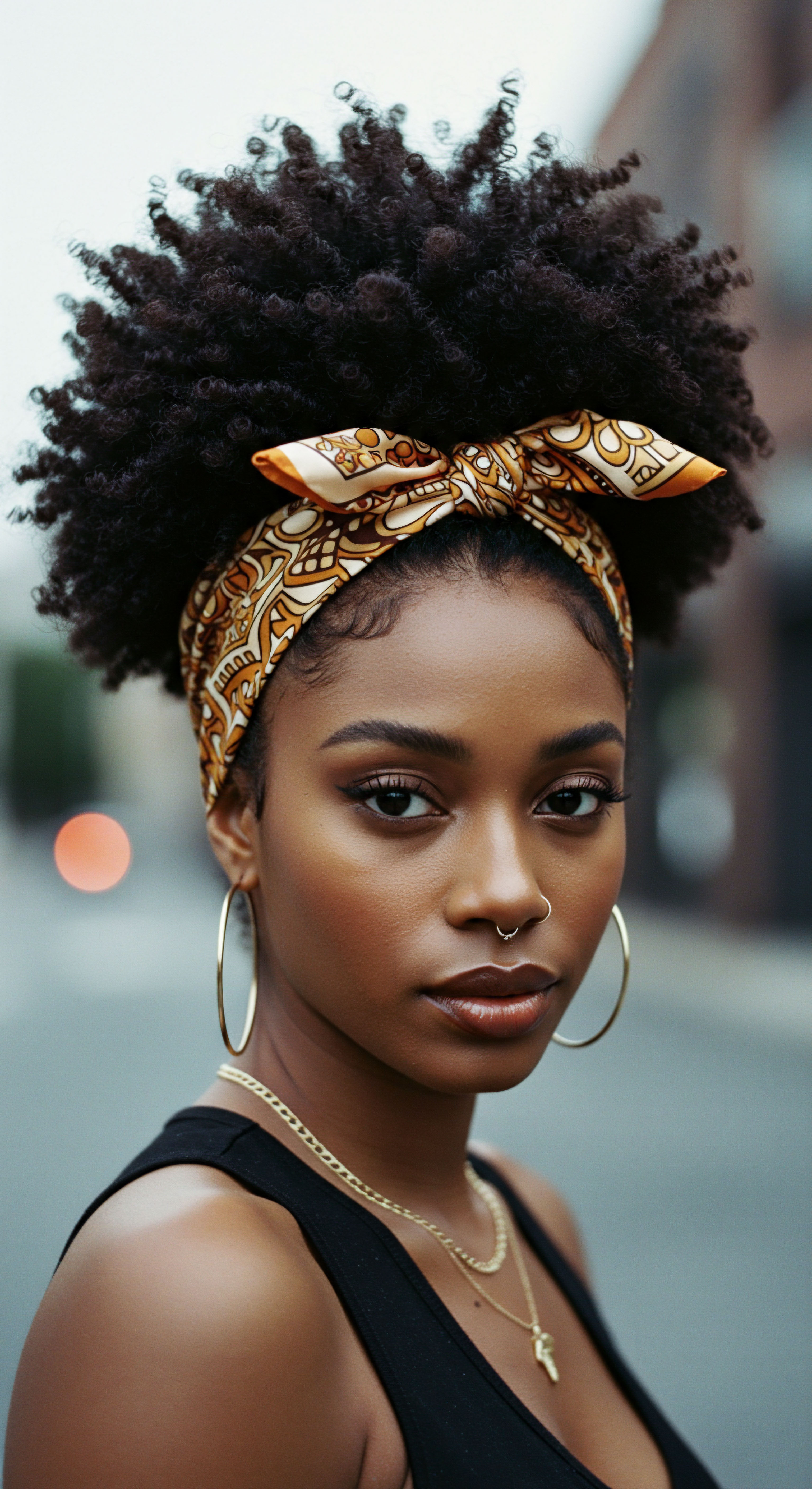
References
- Byrd, A. D. & Tharps, L. D. (2014). Hair Story ❉ Untangling the Roots of Black Hair in America. St. Martin’s Press.
- Collins, P. H. (2009). Black Feminist Thought ❉ Knowledge, Consciousness, and the Politics of Empowerment. Routledge.
- Koval, C. Z. & Rosette, A. S. (2020). The Natural Hair Bias in Job Recruitment. Social Psychological and Personality Science, 11(6), 768-777.
- Norwood, G. (2018). The Curly Girl Handbook. Crown.
- Opie, T. R. & Phillips, A. (2015). African American Women, Hair Politics, and Workplace Norms. Journal of Women, Politics & Policy, 36(3), 324-343.
- Poran, M. A. (2002). The Politics of Good Hair ❉ The Problem with America’s Beauty Standards for Black Women. Feminist Studies, 28(1), 181-199.
- Randle, P. L. (2015). The Natural Hair Movement ❉ An Exploration of African American Women’s Exhibition of Black Pride Through Their Hairstyles. Iowa State University.
- Thompson, C. (2009). Black Women, Beauty, and Hair ❉ Cultural and Historical Perspectives. Palgrave Macmillan.
- Walker, S. S. (2007). African American Hair ❉ An Examination of the Historical and Cultural Significance of Hair in the African American Community. University of Maryland.
- World Afro Day. (2023). Workplace Hair Acceptance Report.